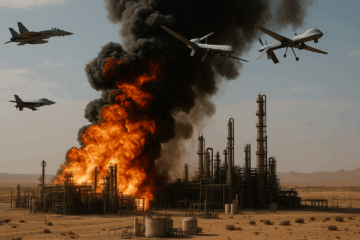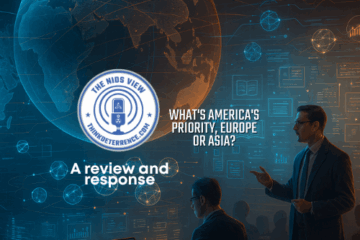President Lyndon Baines Johnson once famously said he gave J. Edgar Hoover the directorship of the FBI for life because “[i]t was better to have him in the tent pissing out, then outside the tent pissing in.” Until the war on Ukraine, Russia was inside the tent because it was an effective partner in nonproliferation of nuclear weaponry and technology.
Now, Moscow is coming to understand what life is like outside the tent. Its new military connections with Iran and North Korea, and its political-economic alliance with China, are reason for concern in the West and more than enough reason to see if there is a way to bring Russia back inside the tent.
Background
Russia as a member of the Nuclear Non-proliferation Treaty (NPT) has, unlike China, worked to prevent proliferation of nuclear weapons and technology. Where China transferred nuclear technology to Pakistan, the Russians were careful in their transfers of items that could be used to proliferate. Thus, when it sold nuclear reactors to India the agreement was that the spent fuel would be reprocessed in Russia (then the Soviet Union), removing any concerns about the spent fuel being diverted for building nuclear weapons.
The Indians have also received two Russian submarines on lease, but both vessels were returned to Russia before the leases ended. When the Russians signed an agreement to build the supersonic Brahmos missile, they insisted that the missile’s range be within the limits imposed by the Missile Technology Control Regime (MTCR).
Similarly, despite the long-standing ties between Moscow and Pyongyang, there were no serious transfers of nuclear capabilities to the Hermit Kingdom—although there are questions about how the technology in the SS-18 missile made it to Pyongyang. The missile was manufactured in a cash-strapped factory in Ukraine and William Broad and David Sanger argue that this possibly led to a sale by rogue actors within Ukraine; the government of Peter Poroshenko denied any knowledge of the transfer. In contrast, the Chinese provided nuclear weapons technology to Pakistan, particularly the bomb design from their second nuclear test.
While Russia stuck with the international community’s goals to prevent nuclear proliferation, the war in Ukraine and the ensuing Western sanctions changed Russia’s strategic calculus and potentially its hesitation to supply technologies to other states.
Faced with sanctions, the Russians cut deals with both Iran and North Korea for the supply of weaponry—ranging from artillery shells and drones to ballistic missiles. It is not clear what will be given in return. Most observers believe that North Korea may receive “direct military assistance from Russia to include fighter aircraft, surface-to-air missiles, armored vehicles and ballistic missile production equipment or materials, as well as other advanced technology.”
It is the advanced technology part of the agreement that is worrying since the North Koreans may well seek technologies that increase the lethality of their strategic weaponry. This could include nuclear submarines and the technological capability to launch submarine-launched cruise missiles. It could also lead the Russians to transfer technology needed to increase the accuracy of North Korean intercontinental ballistic missiles (ICBM) and warheads. Such transfers can take place by giving the actual technology or providing the scientific manpower to make Pyongyang’s weapons more lethal.
In the case of Iran, Tehran filled an immediate need of Moscow by providing drones in large numbers to help the Russians better deal with the changed nature of warfare in the Ukraine conflict. Like Western nations, Russia allowed its munitions stockpiles to run low. Russia is now building up to 6,000 drones annually in a new factory near the Urals. Tehran also supplied close-range ballistic missiles to further beef up Moscow’s arsenal and, in return, Moscow is reportedly upping its supply of weapons to Iran.
Russia is considering the sale of the Su-35 fighter and the S-400 anti-missile system, but the biggest contribution by Moscow could be to help improve domestically manufactured Iranian weaponry. Again, giving advanced technology to the Iranians would increase the lethality of its missile force.
The Strategic Realm
It is in the nuclear realm that the removal of restraints by Moscow would be the most damaging. Russia has abided by the provisions of the NPT and the MTCR, but if the war continues, with increasing Western provision of weaponry to Ukraine and growing sanctions on Moscow, the Russians may decide to abandon the international treaties they helped create and enforce and, instead, start to become major proliferators.
This would create a global flow of weaponry and technology that will not only build up the capabilities of hostile nations but also severely complicate regional security settings and make American intervention more costly. The worst-case scenario would be the Russians basing nuclear weapons in one of these countries—creating a new level of global insecurity. This is not as far fetched as it seems since this was done by the former Soviet Union in Cuba. That move was seen as an existential threat by the US. It is not clear what the reaction would be to a Russian nuclear fait accompli in Iran or North Korea.
Options
Following the Russian invasion of Ukraine, the West was confident that its technological superiority, economic strength, and unified resolve would lead the Russians to back down. Instead, the Russian economy is growing, the West spent close to $300 billion in arming Ukraine, and Kyiv now faces an economic and demographic disaster. It is wishful thinking to suggest that this war may end with a favorable outcome for Ukraine. Bringing the Russians back into the tent may prove difficult.
In four months, the United States will have a new administration, giving the next president some leeway for pursuing a different policy towards Moscow. Carrots, rather than just sticks, may be the best approach. Included, however, in whatever cease-fire plan is created should be a commitment from the Russians that they will continue to abide with the provisions of the NPT and MTCR and ensure that Moscow will try to prevent the flow of Russian scientific labor to North Korea and Iran, specifically.
This will require a rethink in Washington and Brussels on how to end the war and what constitutes an equitable outcome rather than a maximalist view, as suggested by some in the West. Not doing so could lead to a new set of security problems in other parts of the world that are just as crucial for the United States.
Amit Gupta, PhD, is a senior fellow at the National Institute for Deterrence Studies. The views expressed are his own.
About the Author

Amit Gupta
Amit Gupta is a Senior Advisor to the Forum of Federations Ottawa. The views in this article are his own.




